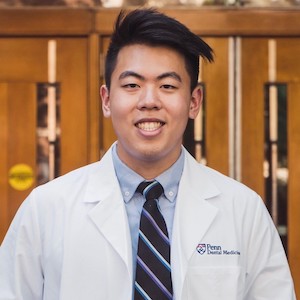
Andrew Tsai
 Andrew Tsai |
Tsai, Andrew, Jeon, Hyeran Helen
University of Pennsylvania School of Dental Medicine, Department of Orthodontics
Alveolar bone remodeling in orthodontic tooth movement (OTM) involves bone resorption by osteoclasts and new bone formation by osteoblasts. Mechanisms involved in OTM include mechano-sensing, sterile inflammation-mediated osteoclastogenesis on the compression side, and tensile force-induced osteogenesis on the tension side. To better understand the cellular and molecular mechanisms of OTM, the use of transgenic animals is very helpful in examining cause and effect relationships. In this review, we aimed to critically summarize the current OTM studies using transgenic animal models to provide mechanistic insight into the cellular events and the molecular regulation of OTM.
MethodsCurrent OTM studies using transgenic animal models were examined, focusing on the related cytokines, mechanosensory cells, and the signaling pathway in OTM. In addition, possible mechanosensors in OTM were summarized.
ResultsCytokines The role of RANKL, sclerostin, bone morphogenetic proteins (BMPs), and transforming growth factor (TGF)-β in OTM using the animal models were reviewed. In addition, we included the mechanistic interpretation from in vitro studies to support the findings from the animal studies. Mechanosensory Cells The role of periodontal ligament cells, osteocytes, and osteoblasts, the principal mechanosensory cells in OTM, using the animal models were reviewed. Intracellular Signaling Pathways Wnt/β-signaling and Yes-associated protein and transcriptional coactivator with PDZ-binding motif (YAP/TAZ) signaling in OTM were reviewed. Mechanosensors Possible mechanosensors in OTM include cytoskeleton, focal adhesions (FAs), primary cilia, gap junctions (connexins), and ion channels.
ConclusionOrthodontic tooth movement is a highly coordinated process in which various cells, cytokines, and complex mechanisms are involved. To date, numbers of OTM studies have been performed, but many are in vitro studies or examined the global deletion of a specific gene or cell type. Transgenic animal studies with the cell type-specific gene deletion can provide insight into the critical cellular and molecular mechanisms in OTM by establishing the cause and effect relationships. Findings from those studies could be applied to our daily orthodontic practice in the future, accelerating osteoclastogenesis and reducing the treatment time. Conversely, blocking the osteoclastogenesis can be applied to prevent orthodontic relapse. Also, increasing the osteogenesis can significantly help the maxillary expansion procedure, reducing the current 5 to 6 months retention period. Further, the transgenic animal studies' findings can contribute to developing precision orthodontics in the future so that we can provide each patient-specific orthodontic treatment.